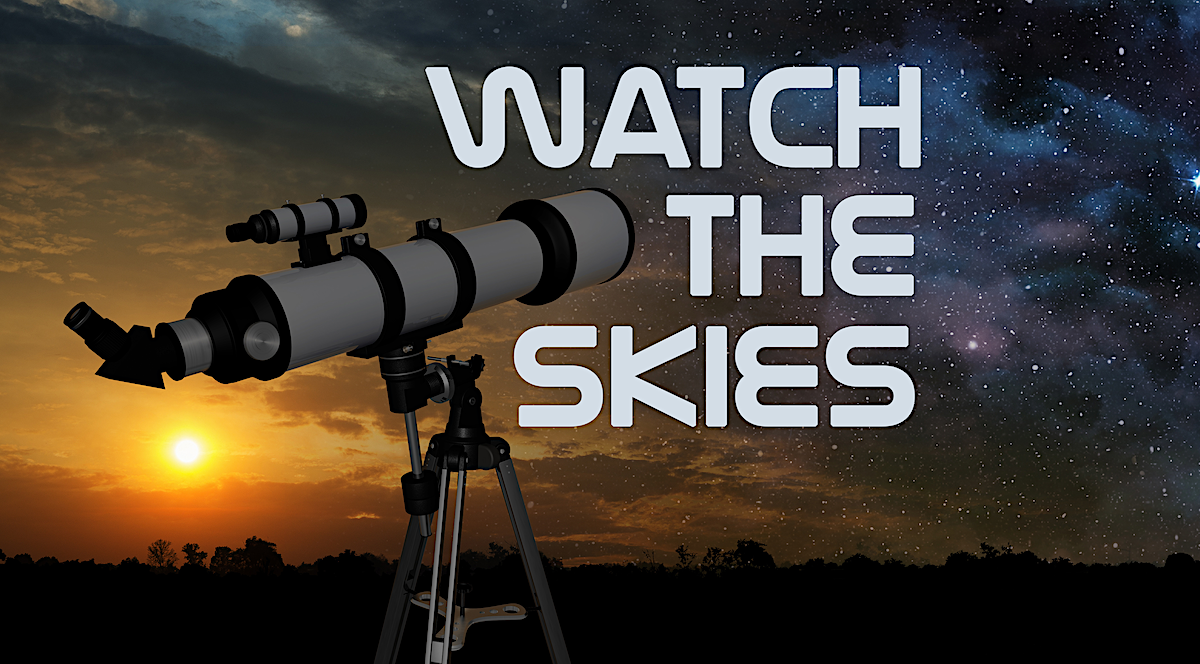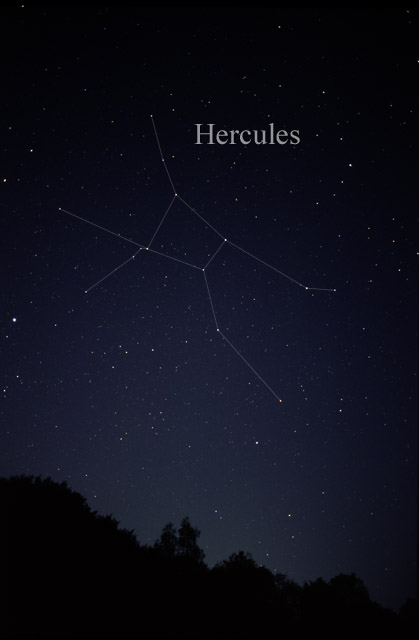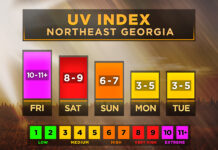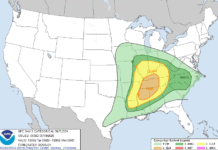
The Planets this Week: Venus remains bright in the evening sky quickly moving towards its half-phase as viewed through a telescope. Jupiter and Saturn are higher in the sky as it gets dark leading to excellent viewing conditions for them.
Naked eye Object of the Week-Hercules: This week we’ll once again be turning our eyes to not one star, but a group of them: the mighty Hercules. Hercules is unusual in that it is quite large as far as constellations go, but the stars in it aren’t particularly bright. In fact, it is the 5th largest modern constellation despite containing no stars brighter than +2 magnitude.

The constellation was first listed in the 2nd century AD by Ptolemy, and has multiple potential layouts. The traditional one has the torso of Hercules laid out using an easily noticeable quadrangle known as the “Keystone”. The constellation contains two bright globular clusters, one of which we covered in a previous week known as M13. It also contains M92, another globular cluster. It also contains the Hercules Cluster, an area of the sky rich in galaxies as seen in the image below.

Right now you can find Hercules high overhead as the sky turns dark, and it can easily be found by finding the “Keystone” torso area and tracing from there as it sinks towards the west by midnight.
Telescope Object of the Week- M92: We’ve covered M13, the bright globular cluster located in Hercules, but this week let’s take a look at the other one: M92. M92 was first discovered by Johann Bode in 1777 and later rediscovered by Charles Messier in 1781 and added to his catalogue of bright deep sky objects. It is one of the brightest globs in the sky but it is slightly dimmer than the nearby M13. It is located around 26,700 light years from Earth, relatively close by deep sky standards. It is also among the oldest globular clusters at around 11-14 billion years old.

You can find M92 not terribly far from M13 as it makes a triangle with one edge of Hercules’ torso.

Get out this week and enjoy the break from the clouds to take in some stargazing!
And as always, watch the skies!







